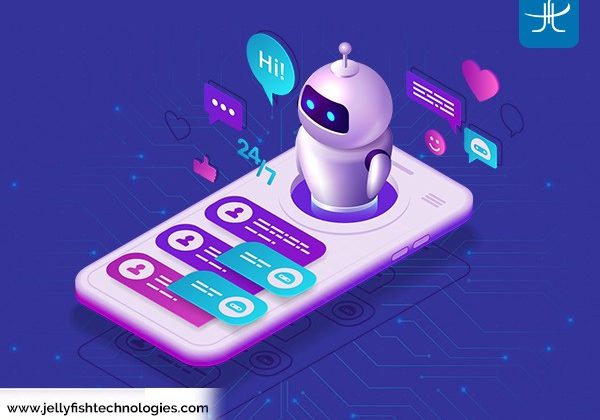
“OMG! You left some items in your cart. Still want them? Get them before they’re gone.”
Sound familiar?
“Hi! If you have any questions, I’m here to help!”
Even this rings a bell, no?
Well, these are some classic examples of chatbots in action.
Chatbots are tools or chat robots that use Natural Language Processing (NLP) and Natural Language Understanding (NLU) capabilities to converse with humans over the web and help them perform certain functions. For instance, book appointments, order food, and fine music.
From simple tasks like appointment scheduling, membership renewals, and complaints handling to complicated ones like order tracking, payment processing, and customer onboarding, chatbots are capable of doing things that other software could only dream of.
The Future of Chatbots
Chatbots statistics by Drift shows that the willingness to use chatbots for purchases rose from 17.1% to 41.3% from 2019 to 2020.
From these figures, it is clear why most e-commerce stores, at least the leading ones, adopted the chatbot technology so widely. They were not only able to ramp up their sales with this move but also serve their customers better and prevent them from abandoning their shopping carts.
Thanks to Abandon Cart Chatbots, this is possible now.
With big tech giants like Facebook and Google increasingly investing in the chatbot technology, it is clear that more and more businesses will capitalize on this new-gen technology in the coming times. A study by Juniper Research claims that by 2022, 75–90% of queries are expected to be handled by chatbots.
Imagine what the customer servicing landscape would look like by then! More bots, fewer humans. More resolutions, fewer waiting times. More satisfaction, fewer disappointments.
The technology has created a huge value for businesses.
Ready to get on the chatbot bandwagon?
Incredible!
But chatbot development and implementation must be a careful process, one that takes into account the latest innovations and developments in the field. Or else, it might break your chatbot implementation strategy. One of the most important elements that can ensure the success of a chatbot strategy is Artificial Intelligence (AI).
AI gives computer systems a human touch in performing tasks.
In the context of chatbot technology, this means giving chatbots a human touch to strike accurate, human-like responses. This is done with the help of ML (Machine Learning) and NLP (Natural Language Processing).
Chatbots are here to stay.
With AI improving constantly, the shift from traditional rules-based chatbots to AI-driven chatbots is prominent today. It is predicted that chatbots will begin to replace customer support representatives soon.
Role of Artificial Intelligence (AI) in chatbots development
The two important elements of Artificial Intelligence that are used in chatbot development are Machine Learning (ML) and Natural Language Processing (NLP). It is through NLP capabilities that it can detect and learn from detailed patterns in human conversations and make future interactions more personalized.
When it comes to intelligent data analysis, AI plays a major role. It enables chatbots to analyze data and improve their learning capacity. It is through ML that it can learn from queries and bot training.
With Artificial Intelligence, you can train your chatbot with various intents that the user might type during the conversation, based on which the response to the query can be streamlined. While a traditional, rules-based chatbot completely lacks human touch and emotions, an AI-driven chatbot is more perceptive of human emotions and behaviors. With this extraordinary capability, it becomes possible to create superior customer experiences, which might not be possible in chatbots that lack an AI capability. It is because of this that the future of chatbots is AI-driven.
Funny, isn’t it? Well, that’s actually frustrating.
This is an epic chatbot failure!
Bots without any common sense or ones that don’t accept no for an answer are classic examples of bot conversation failures.
Users dread robotic responses and tones. A chat can become negative the moment it lacks a natural, human tone. That’s how important the human touch is.
Modern AI chatbots are way different from first-generation chatbots that were completely rules-based and led to frustrating user experiences. They mimic human behaviors precisely.
Ending Note
Ready to add chatbots to your marketing mix and boost your sales and user engagement?
Jellyfish Technologies is a reputed technology leader that can help you launch AI-driven conversational chatbots that are emotionally intelligent, omni-channel, easy-to-use, and can perform complex reasoning without human intervention.
